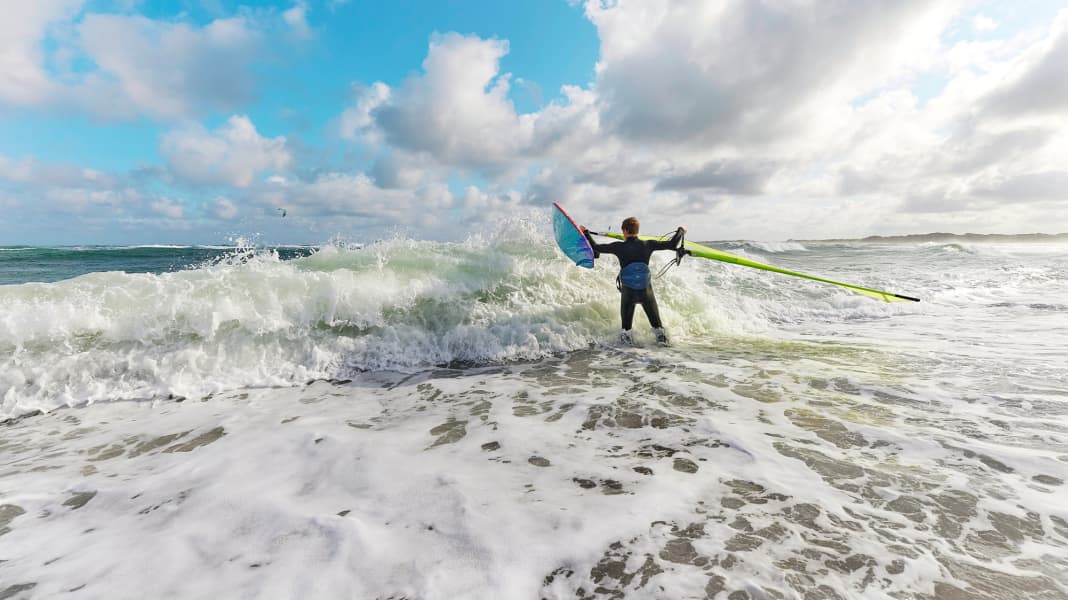
It's a bit like when you were 14 in front of the village disco. You'd like to join in the party, but the grim-faced bouncer at the entrance just shakes his head patronisingly: "You're not getting in here, kid!" The entrance to the surf spot is also guarded in some places - by the Shorebreak. If you run headlong, you'll run into the wall and make a mess of your equipment. But with the right tactics, you can stay under the radar, slip past the bouncer unnoticed and join in the party at any wave party. The following tips will get you in.
The shorebreak - a moody fellow
The term shorebreak refers to waves that break directly on the shore - they often discharge their energy very powerfully here. Anyone who has been to different surf spots may have noticed that there are shorebreaks in some places, but not at all in others. The general rule is: where the beach slopes evenly and flatly into the water, there is no shorebreak. The force of the incoming waves is broken early and further out, the waves then gently roll out as foam rollers. Conversely, in places where the beach drops steeply into the water, the energy of the waves is almost completely discharged into the shore area. Where the water suddenly gets deep, the powerful breakers thunder onto the sand, causing many a windsurfer to break out in a sweat. The problem is that beaches with a shore break have a steep edge. Towards the beach, it's too shallow to take off, one step over the edge and you're up to your neck in water.
There are often areas with more or less shorebreak at a spot - so a detailed spot check and observing other windsurfers can make things a lot easier at an unknown spot.
The key: the right timing between sets
Quite often, however, you just have to get through it somehow. To do this successfully, you should take some time to observe the waves at the start, because: Waves never come to shore evenly, but always in sets. If the average wave height is 1.5 metres, for example, set waves can easily measure two to 2.5 metres. After a big set, there is often relative calm for a short time - this is the moment to watch out for. Then it should be quick, so the beach start has to be right!
A shorebreak of half a metre can break masts like matchsticks.
Where is the best place to start?
Many coasts are stabilised by groynes or piers to prevent severe erosion. In front of the groynes, the direction of the current usually runs parallel to the coast with the wind. Where groynes interrupt the natural current, the water pushed onto the beach cannot flow back again unhindered. This results in a concentrated return flow, usually in the area between the obstacles. This seaward current is known as the surf current or rip current. This current can be dangerous for swimmers if they try to swim against it in panic. Surfers can use this current to get through the shore break. If the distance between two shallow groynes is 100 metres, for example, start about 30 metres below the groyne to windward. This way, you can take advantage of any rip currents and have enough space to the leeward groyne - in case you do get washed out.
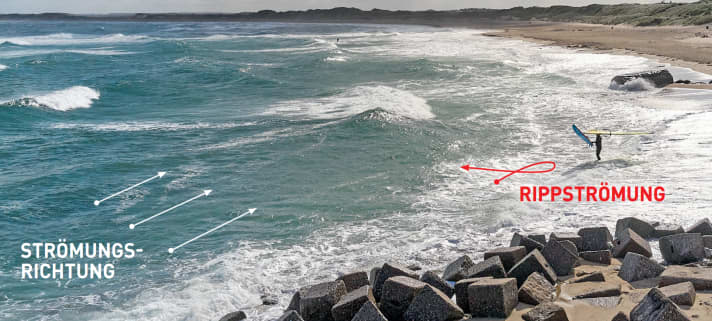
Start at Shorebreak
If the spot offers the opportunity, look for a stretch of beach where the wind comes in sideshore or at least sideonshore. Flat onshore conditions in combination with shorebreak can be a Herculean task that only very experienced windsurfers can master.
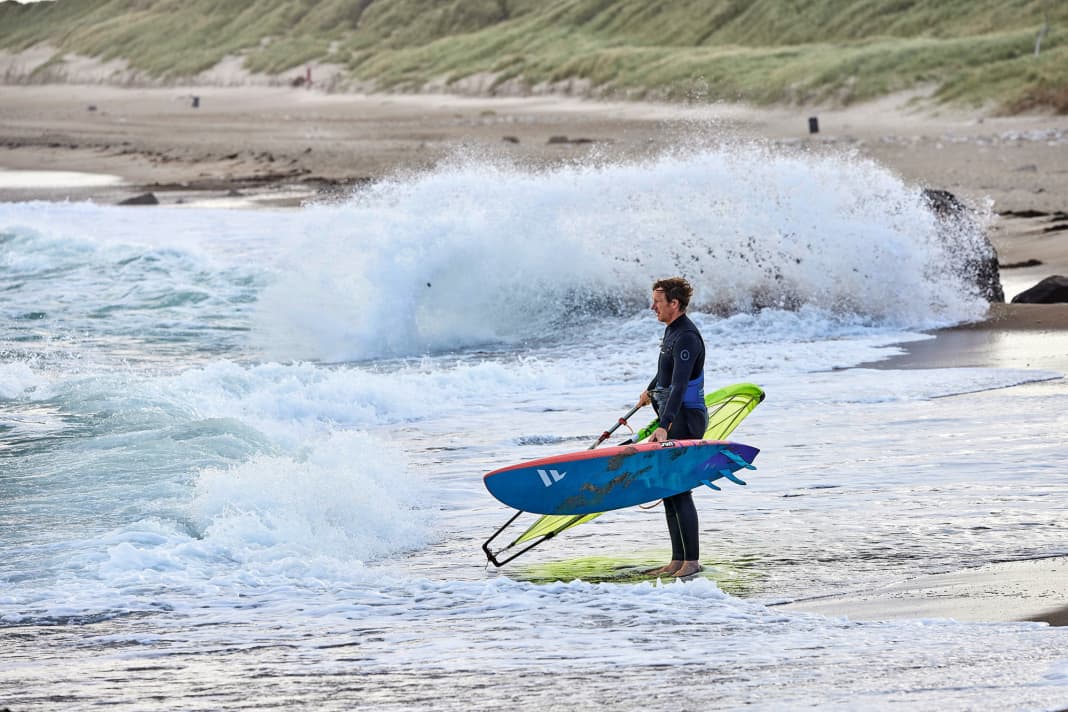





If you wait too long to get upwind, the current will quickly pull the tail to leeward and you won't be able to get upwind. Take a few quick steps towards the base plate to push the bow out of the wind and bring the tail back within reach. If you don't manage to get upwind, blow to retreat. Regroup on the shore, wait for a set break and try again.
When crossing the shore break, timing is of the essence.

Land correctly in the shorebreak
Landing at shorebreak also needs to be learnt. Position yourself at a safe distance on a wave that is building up and surf with it towards the beach (1). Just in time, i.e. a few metres before the shore, shift your weight to the tail and consciously let the wave pass underneath you (2-3). As soon as you're behind the crest of the wave, close out again and try to stay on the back of the wave directly behind the crest. Surf as far up the beach as possible behind the crest (4). Jump off the board to windward and grab one foot strap with your back hand (5). The sail turns to leeward with the wind and the water flowing back automatically turns the nose of the board towards the sea (6). Walk quickly up the beach (7).
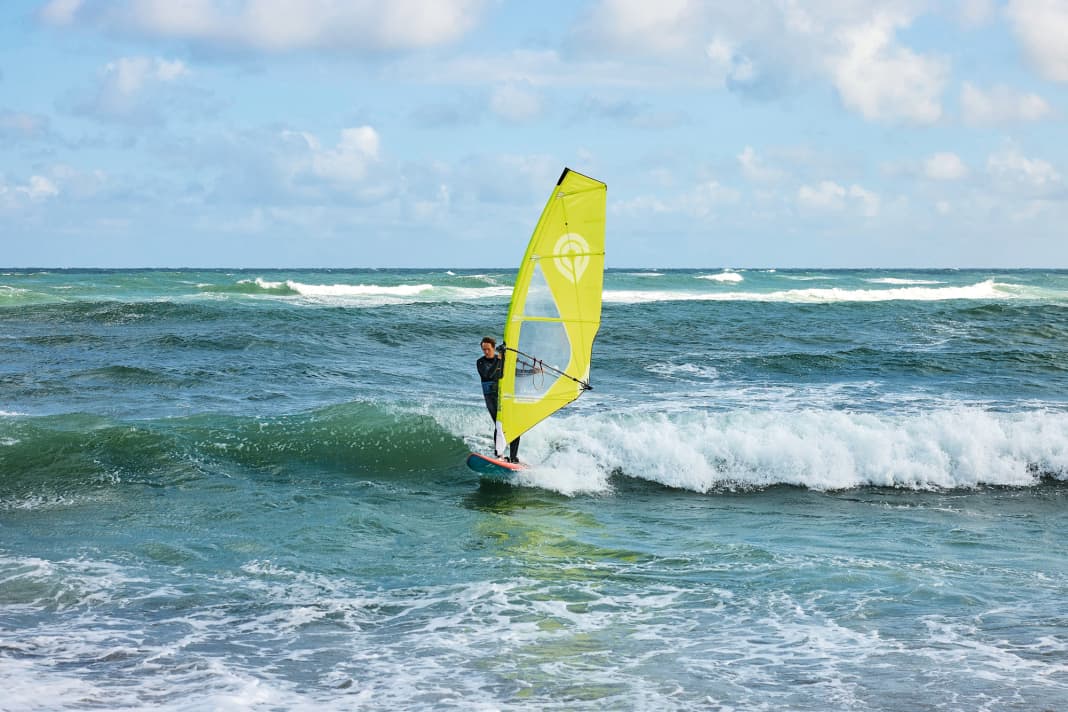





The 3 most common shorebreak mistakes
1. incorrect timing when starting

The right timing when starting has a lot to do with experience. If you just start running, it is not uncommon to be thrown backwards onto the sand. So watch the sets before you start. You should get ready as soon as a large set arrives. Wait in the starting position and slowly enter the water as the set waves arrive, but not into the break zone. As soon as the last set wave has broken, you need to move quickly. Normally you will then have a gap that will make it much easier for you to start.
2. landing in front of the wave
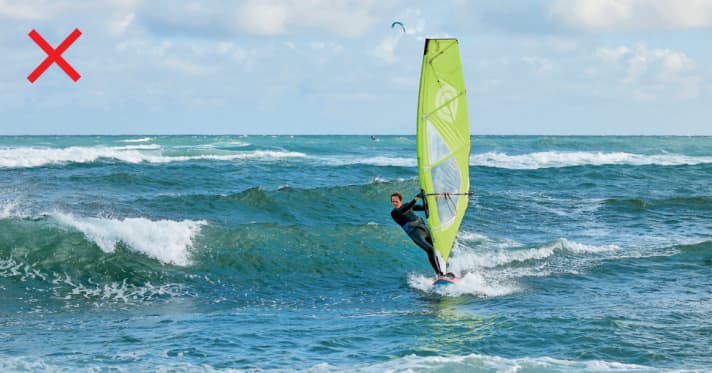
It's tempting to let yourself be pushed towards the beach with a wave behind you. However, if you go all the way to the (bitter) end, you will literally ride out onto dry land only to be washed through by the shorebreak a fraction of a second later. There is a risk of damaging your equipment or even injuring yourself. So remember: only surf in front of the wave until the wave builds up steeply close to the beach. Let it pass underneath you in good time and then try to ride the back of the wave onto the beach!
3. backwash waddle

When shorebreak breaks directly onto the steep beach, the washed up water quickly runs "downhill" between the waves back towards the sea - this is known as "backwash". It is therefore essential to keep the sail up after getting off the board. If the outhaul is too low, the backwash will flow onto the sail and the weight can quickly break your equipment or trap you under the sail.

